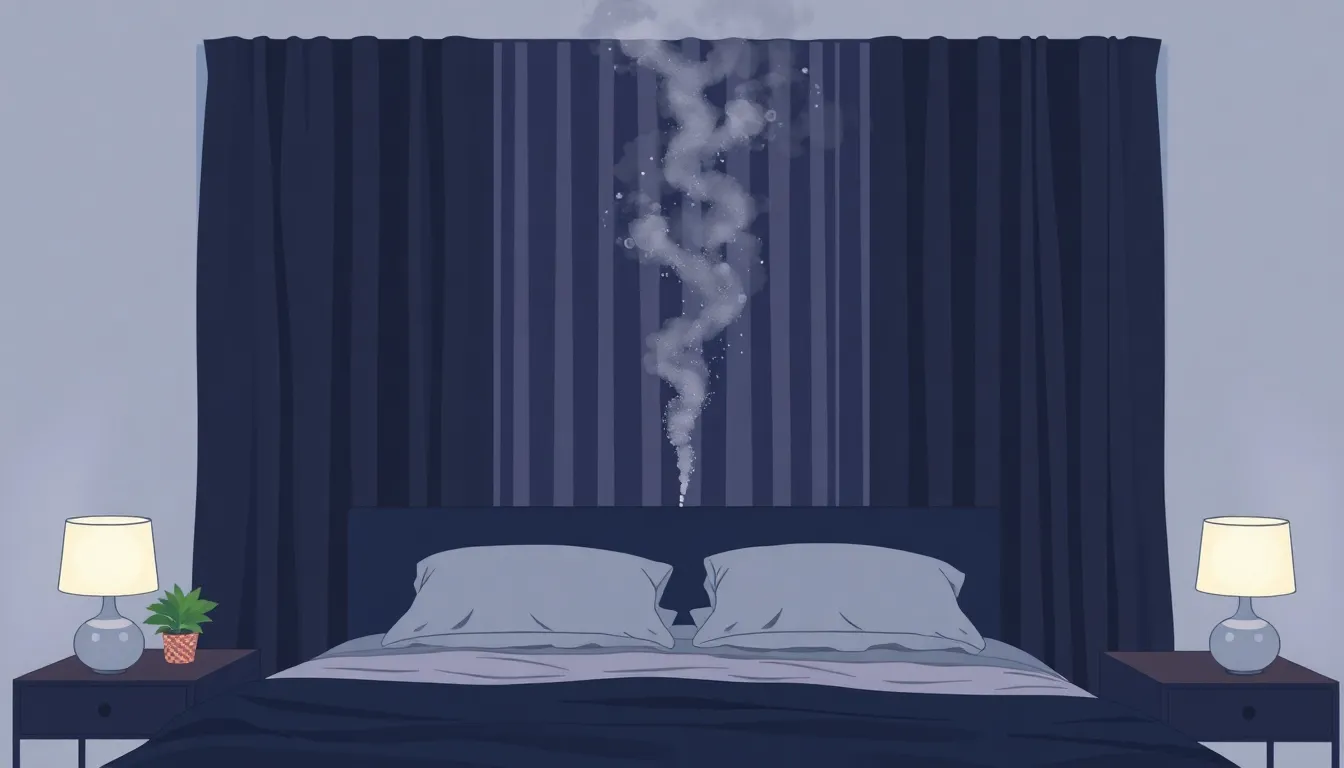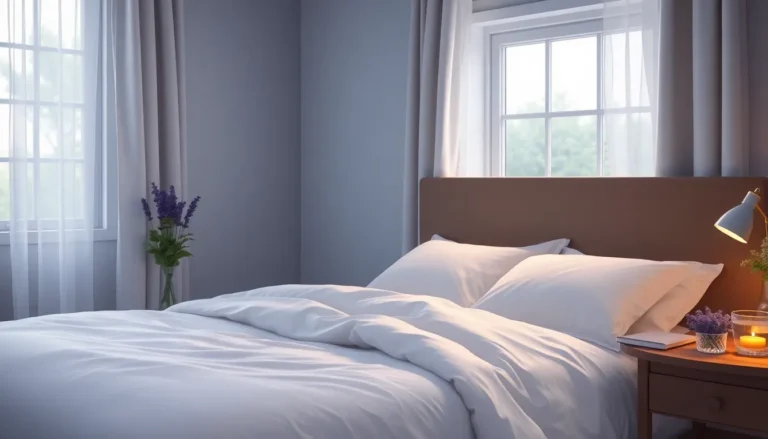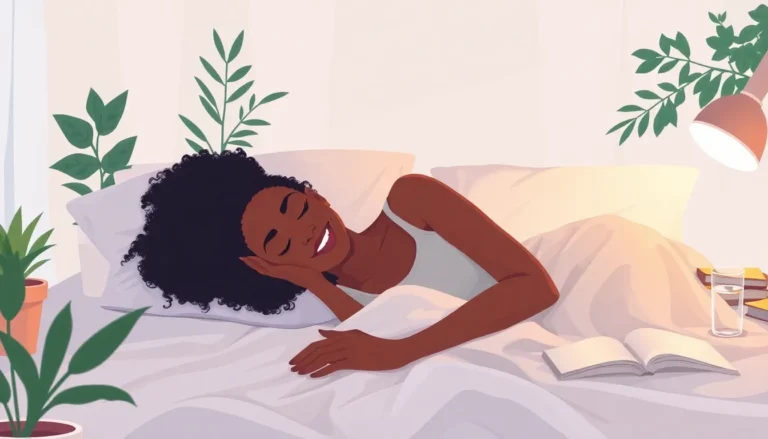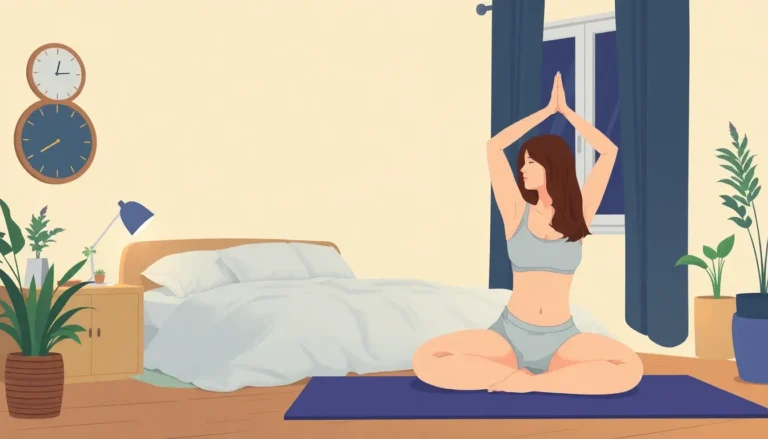Table of Contents
ToggleIn a world that never sleeps, finding a way to unwind can feel like searching for a unicorn in a haystack. Enter the “lights out routine”—the secret sauce to turning chaos into calm. Imagine drifting off to dreamland without scrolling through your phone for the umpteenth time or negotiating with your pillow to let you sleep just five more minutes.
Understanding Lights Out Routine
A lights out routine creates the ideal environment for relaxation and sleep. This routine helps reduce distractions and prepares the mind and body for rest.
Definition and Importance
A lights out routine refers to a series of calming activities taken before bed. This routine promotes better sleep quality by signaling to the body that it’s time to unwind. Establishing a consistent routine is crucial for regulating sleep patterns. It allows individuals to detach from daytime stress and electronics. Quality rest supports cognitive functions and overall health, making this routine invaluable for anyone seeking improved well-being.
Benefits of a Consistent Routine
Consistent routines offer numerous benefits that enhance sleep quality. Improved sleep quality results in a refreshed mind and body. Reducing anxiety occurs as the body learns to relax through familiar activities. Stronger sleep patterns emerge, allowing for quicker transitions into deep sleep stages. Encouraging relaxation techniques, such as reading or meditation, fosters a peaceful mindset. Additionally, enhancing overall health becomes achievable through the restorative power of consistent sleep, positively affecting daily performance.
Key Components of an Effective Lights Out Routine

An effective lights out routine includes specific components that promote relaxation and enhance sleep quality. Establishing a good environment and limiting distractions plays a critical role in this process.
Creating a Relaxing Environment
Creating a relaxing environment sets the tone for good sleep. Ensure the bedroom is dark, quiet, and cool. Dark curtains or blackout shades can block external light, while eye masks can offer an extra layer of darkness. Utilizing white noise machines or sound apps can mask disruptive sounds. Aroma diffusers releasing calming scents, such as lavender, contribute positively to relaxation. Comfortable bedding and pillows support restful sleep by providing proper support.
Limiting Screen Time Before Bed
Limiting screen time before bed significantly reduces blue light exposure. Research shows that blue light can interfere with melatonin production, making it harder to fall asleep. Avoid screens from phones, tablets, and TVs at least one hour before bedtime. Engaging in activities like reading or practicing gentle stretching instead can promote better sleep. Setting a specific cut-off time for electronic devices establishes a healthy boundary that signals the body it’s time to unwind. Prioritizing these actions leads to improved overall well-being and enhances nightly rest.
Steps to Implement Your Lights Out Routine
Creating a successful lights out routine involves simple yet effective strategies. These steps will help individuals transition into a peaceful night of sleep.
Setting a Consistent Bedtime
Establishing a consistent bedtime can significantly regulate sleep cycles. Individuals should pick a target time and stick to it every night, including weekends. Doing so reinforces the body’s natural circadian rhythm. This regularity makes falling asleep easier and improves overall sleep quality. Notably, research indicates that maintaining a regular sleep schedule supports better cognitive function and emotional health. Additionally, setting a bedtime alarm can serve as a helpful reminder to begin winding down.
Incorporating Relaxation Techniques
Incorporating relaxation techniques makes the transition to sleep smoother. Practices like deep breathing, progressive muscle relaxation, or guided imagery can calm the mind and body. Engaging in gentle yoga or stretching also releases tension accumulated throughout the day. These activities signal the body that it’s time to unwind, fostering a peaceful atmosphere. Experts recommend dedicating at least 20 to 30 minutes each night to these calming practices. Using calming scents, such as lavender, during this time enhances relaxation and promotes better sleep quality.
Common Challenges and Solutions
Establishing a lights out routine presents various challenges. Addressing these hurdles enhances the likelihood of success.
Overcoming Sleep Disruptions
Sleep disruptions can stem from noise, light, or anxiety. Creating a peaceful environment reduces these issues. Sound machines offer effective white noise options while blackout curtains block outside light. Consider using eye masks for complete darkness. If anxiety triggers restlessness, integrating calming activities into the routine helps. Techniques like gentle yoga or deep breathing exercises lower tension and promote relaxation, aiding in a smoother transition to sleep.
Staying Committed to Your Routine
Staying committed to a lights out routine often proves difficult. Setting a specific bedtime creates consistency, reinforcing a natural sleep cycle. Following this schedule fosters better sleep quality over time. Keeping a sleep diary tracks patterns, making it easier to identify what works. Additionally, reducing distractions strengthens commitment to the routine. Limiting screen time before bed allows for a more tranquil atmosphere, helping individuals maintain their focus on the established nightly practices.
A lights out routine is a powerful tool for anyone seeking better sleep and overall well-being. By establishing a consistent practice that prioritizes relaxation and minimizes distractions, individuals can significantly enhance their nightly rest. The benefits extend beyond sleep quality; improved cognitive function and reduced anxiety can lead to a more productive day.
Creating a calming environment and incorporating soothing activities into the pre-sleep ritual are essential steps in this process. Overcoming challenges like noise and anxiety is possible with mindful strategies and dedication. With commitment to this routine, anyone can unlock the potential for deeper sleep and a healthier lifestyle.




